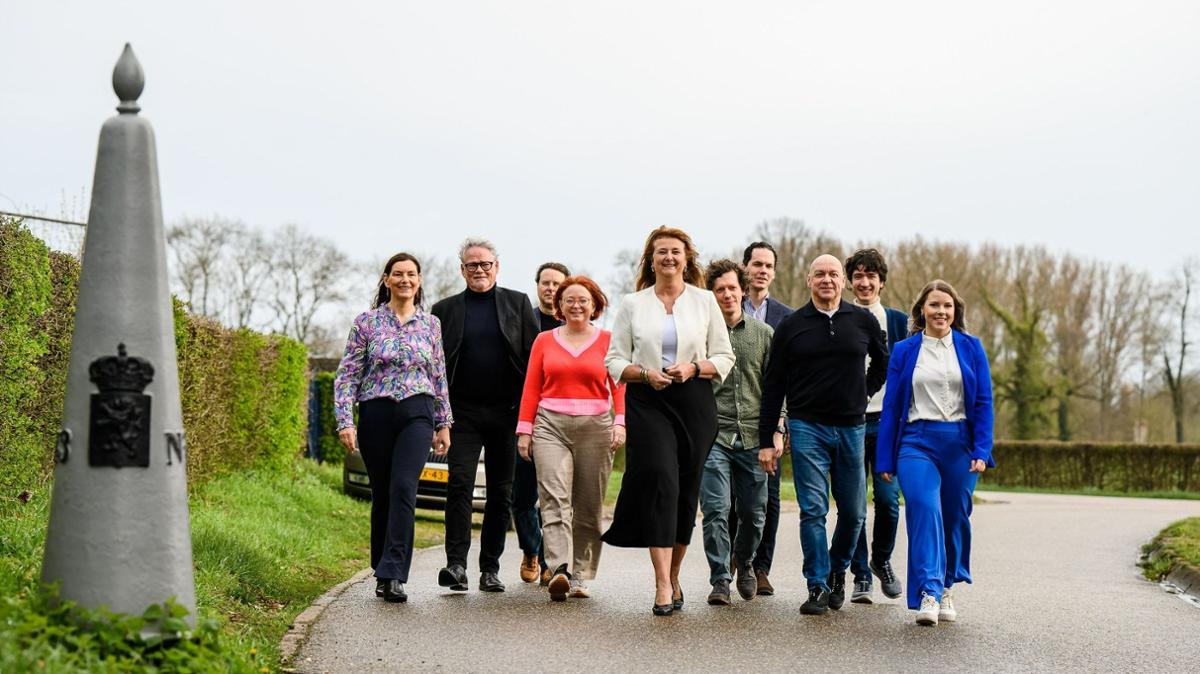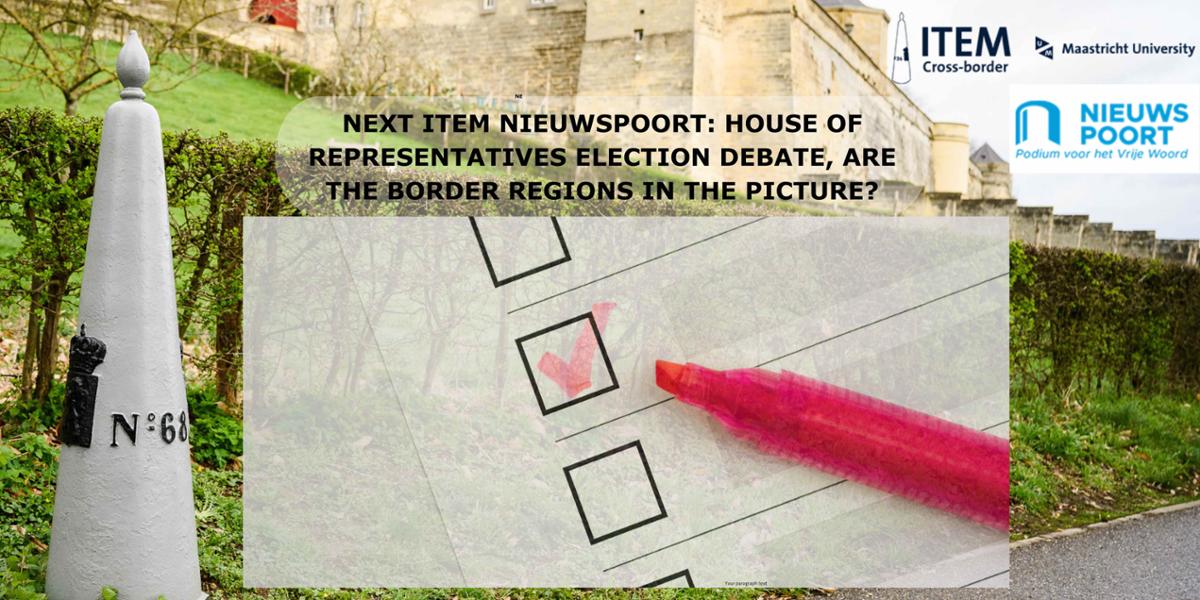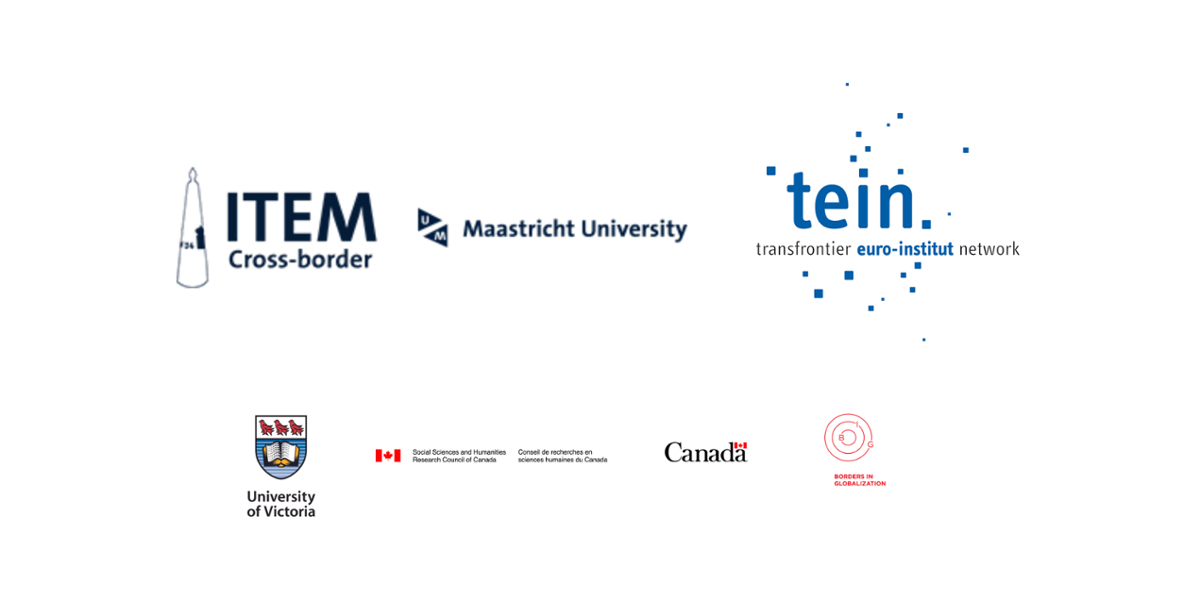 |
Guestcolumn
'BridgEU – A new EU legislative initiative to overcome cross-border obstacles' |
| Europe is first of all a cross-border adventure. Nonetheless, the life of the 135 million citizens living in border regions is still severely affected by bureaucratic walls, invisible obstacles, and unacceptable denials of the opportunities Europe offers to all of us.
In the European Parliament, we are convinced that this is a b latant contradiction of what Europe should stand for. We want to eliminate this absurdity: this is why we launched a new legislative initiative, aiming at relaunching the negotiations on a new method enabling local and regional authorities to overcome bureaucratic obstacles. To reflect our ambition to dismantle walls and to build bridges between our territories, I have proposed to entitle the new instrument BridgEU: Border Regions’ Instrument for Development and Growth in the EU. latant contradiction of what Europe should stand for. We want to eliminate this absurdity: this is why we launched a new legislative initiative, aiming at relaunching the negotiations on a new method enabling local and regional authorities to overcome bureaucratic obstacles. To reflect our ambition to dismantle walls and to build bridges between our territories, I have proposed to entitle the new instrument BridgEU: Border Regions’ Instrument for Development and Growth in the EU.
Photo: © European Union 2023 - Source : EP
We are calling upon the European Commission to issue a revised legislative proposal on the basis of the 2018 proposal establishing a European Cross-border Mechanism. In 2018, the Council halted negotiations raising several issues and questioning some parts of the proposal. Now, we want to work hand in hand with Member States and this is why we have launched a new proposal taking into account all the major initial concerns of the Council. The most important: there are no strict obligations how to tackle cross-border obstacles. BridgEU lays down procedures that can be triggered on a voluntary basis allowing regional or local actors, association of citizens and NGOs involved in the implementation of a cross-border project to signal an obstacle to a Cross-border coordination point set up at the Member State level. The Coordination point, which shall be established in each Member State, shall then assess within a given deadline whether the obstacle actually exists, and how to eliminate it.
We put forward a series of policy measures that the Cross-border coordination point can assess to overcome the obstacle, such as the review of the national legal or administrative framework, the adoption of soft-law measures, or the deferral of the matter to bodies established by a treaty regulating cross-border cooperation with the neighbouring country.
BridgEU envisages as well a specific course of action when the obstacle is caused by several regional and national acts, and therefore requires a higher level of coordination among authorities at different levels and on two sides of the border. In these circumstances, the Cross-border Coordination points of the Member States involved can set up a temporary Cross-border committee, where all competent authorities are invited to agree on tailor made measures (an ad-hoc solutions) to overcome the obstacle. A very pragmatic approach to reach our common goal: less obstacles, less bureaucracy and fast and pragmatic solutions.
One thing is made crystal clear throughout our text: BridgEU will leave the functioning of existing cross-border agreements and arrangements already in force between Member States untouched (e.g. the Benelux, the Nordic Council, the Quirinale Treaty), and will not interfere with the internal constitutional organisation of Member States. Regardless, once BridgEU is activated, the procedures and deadlines it establishes must be complied with, to ensure its effectiveness.
The quasi-unanimous support across political groups during the vote in Plenary signals Parliament’s unity in this fight, and our willingness to reopen negotiations with our Member States as soon as possible. In this respect, the commitment undertaken by Commissioner Elisa Ferreira to consider the issuing of a revised legislative proposal is certainly reassuring. This would be the perfect way to celebrate the 30th anniversary of the Single Market, and to truly make border regions “living labs of European integration”. This is the “Europe of concrete solutions” that citizens are calling for.
Sandro Gozi
Member of the European Parliament
|
|
|
|
 |
| INVITATION: NEXT ITEM - NIEUWSPOORT: HOUSE OF REPRESENTATIVES ELECTION DEBATE, ARE THE BORDER REGIONS IN THE PICTURE? |
EVENT LANGUAGE: DUTCH
Early House of Representatives elections will take place in the Netherlands on 22 November next. A total of 26 parties have submitted their lists of candidates for the House of Representatives elections. In the party manifestos, the political parties formulate their plans for the future of the Netherlands, and directly or indirectly shape cross-border cooperation and the development of border regions.
In the run-up to election day, ITEM is analysing the relevant aspects for border regions and cross-border cooperation in the party manifestos of the 15 highest polling parties (based on the NOS polls). On 16 November, this analysis will be published in the ITEM Reflection: House of Representatives Elections from a Cross-Border Perspective.
We would like to share this reflection with you at the NEXT ITEM – NIEUWSPOORT: House of Representatives Election Debate, are the border regions in the picture? Cross-border cooperation and the perspective of the border region will be discussed in the form of an election debate with candidates for the House of Representatives.
The programme is as follows, led by Sander Kleikers:
10.30 h. Reception and coffee
11.00 h. Welcome by director ITEM Prof Dr Anouk Bollen
11.05 h. Start of substantive political discussion around cross-border themes such as labour market & economy, care & welfare, mobility & infrastructure, education & culture, security, energy transition & climate, innovation, euregional governance & cooperation
12.20 h. Wrap-up and conclusions
12.30 h. Closing with drinks
13:00 h. End |
|
|
|
|
|
 |
| ITEM ANNUAL CONFERENCE 2023 |
For major tasks such as energy transition and the development of sustainable transport, cross-border cooperation is essential. An important form of cross-border cooperation is the European transport corridors, which focus on pipelines, ports (hydrogen) and rail, among others. Within corridors are subareas that have often already organized themselves across borders, such as the Benelux, Eurodelta, La Grande Région and the Dutch-Flemish cooperation with the initiation of a switching mechanism.
In the corridors, Europe and the member states arrive at practical and impactful solutions. Several questions arise in cross-border cooperation on infrastructure and mobility. How can interpreting border effects at the start of new developments increase the impact in practice? How do cross-border governance structures deal with the formation of structural substantive coalitions? In what way can the use of instruments be an important catalyst for achieving transcending objectives?
The importance of cross-border cooperation in social tasks is increasing. At the ITEM Annual Conference 2023 we would like to discuss with you the importance of European transport corridors for the development towards a sustainable and liveable society and the cross-border issues involved.
The province of Zuid-Holland is hosting the ITEM Annual Conference 2023. This conference will take place on Friday, November 17, 2023 at the county hall in The Hague. An interesting programme has been put together for you.
Kind regards,
Prof. Dr. Anouk Bollen-Vandenboorn, Director ITEM
Drs. Jaap Smit, King’s Commissioner in the province of Zuid-Holland
Please register here up to and including 12 November 2023 |
|
|
|
|
|
 |
| Three countries, one big headache and infinite possibilities |
EU integration is the dream of a Europe without borders. Belgian and German border territories are an integral part of the daily lives of thousands of people in Maastricht. While there are no more passport controls, differences in legislation still complicate the European dream. Martin Unfried and ITEM research and advocate for people in European cross-border regions.
The Meuse–Rhine Euroregion (EMR) spans three countries, five regions, three languages, four million inhabitants and the cities of Maastricht, Liège, Aachen, Hasselt and Eupen. Sounds complex – and it is. “If you look at research into European integration – no matter from which angle – there’s a bit of a gap when it comes to border regions,” Martin Unfried, senior researcher at UM’s Institute for Transnational and Euregional cross-border cooperation and Mobility (ITEM), explains.
|
|
|
|
|
|
| Public defense PhD research Sander Kramer |
 We are very proud to announce the public PhD defense of ITEM researcher Sander Kramer on Friday 8th December 2023 at 13.00h. The title of Sander’s dissertation is: ‘Effective Cross-Border Pension Information in the Face of Multi-Level Legal Systems. A cross-disciplinary research into the cross-border taxation of pensions’. We are very proud to announce the public PhD defense of ITEM researcher Sander Kramer on Friday 8th December 2023 at 13.00h. The title of Sander’s dissertation is: ‘Effective Cross-Border Pension Information in the Face of Multi-Level Legal Systems. A cross-disciplinary research into the cross-border taxation of pensions’.
The defense will take place at 13:00 hours in the Auditorium Maastricht University, Minderbroedersberg 4-6 Maastricht & online.
Are you interested in attending it physically or online? Let us know at item@maastrichtuniversity.nl |
|
|
|
|
|
| Doctorate degree Julia Reinold |
 Julia Reinold received her PhD on the 5th of October! Her research focused on gaining a better understanding of the decision-making factors of international highly-skilled migrants in the Netherlands and the Euregio Meuse-Rhine with regard to arrival, staying or leaving the region. The promotion can be watched back here. Julia Reinold received her PhD on the 5th of October! Her research focused on gaining a better understanding of the decision-making factors of international highly-skilled migrants in the Netherlands and the Euregio Meuse-Rhine with regard to arrival, staying or leaving the region. The promotion can be watched back here. |
|
|
|
|
|
 |
ITEM & Benelux Union Workshop - European Integration at the borders: new instruments to overcome (old) obstacles
How to go beyond today’s status quo in cross-border cooperation? #EURegionsWeek |
Thursday 12 October 09:30 – 13:00
The event was a collaboration between ITEM/Maastricht University and the Secretariat General of the Benelux Union and part of the European Week of Regions and Cities as an officially notified Side-Event. The workshop focused on European Integration at the borders: how to better integrate border regions across borders, particular wat are innovative legal, administrative and governance ideas. It was especially discussed how to go beyond the current status quo, whereby the assumption is that border regions are stuck when it comes to European integration. ITEM research has shown border obstacles often cannot be solved adequately and new obstacles keep arising.
In a first panel the question was raised how to better prevent border obstacles from occurring. Britt Elfrink and Marieke Meijer from the Dutch Ministry of Interior and Kingdom relations presented their experiences with a relatively new obligation for the line ministries, to assess potential effects for border regions of new legislative proposals. The Dutch government is the first in the EU who has this sort of obligation of cross-border impact assessment. ITEM developed for the ministry a guidance document and is training different ministries on how to apply cross-border impact assessment. Britt Elfrink emphasized how important awareness rising was for question of potential border effects. That was today the big challenge when talking to different ministries. Experiences from Germany and France, the European Commission and general developments of territorial impact assessment were discussed.
In a second panel, Sandro Gozi from the European Parliament, presented a recently adopted resolution that asks the European Commission to come with a new revised proposal for a European Cross-border Mechanism. According to Mr Gozi, who was the rapporteur of the resolution, the ideas proposed under the new name BridgEU, are taking account of the reluctance of the Member States with respect to certain legal obligations for solving obstacles. So, the proposal is very much focused on the establishment of a sound process and the institutional capacities for finding ad-hoc solutions across the border. This was discussed also with respect to existing legal instruments that are available in the framework of the Benelux Union. According to the European Commission, until the end of the year, the Commission will come with an initiative and a reaction to the EP resolution. In the meanwhile, the Commission already published a consultation on this proposal, calling for feedback. The call for evidence can be found here (open up to 16 November 2023) |
|
|
|
|
|
 |
| Save the date: ITEM / TEIN ANNUAL CONFERENCE 2024 |
26 / 27 SEPT. 2024: THE FUTURE OF CROSS-BORDER COOPERATION AND MOBILITY: HORIZONTAL INTEGRATION AND BEYOND
This 2-day Conference (co-organised by the Institute for Transnational and Euregional cross-border cooperation and Mobility (ITEM) and the Transfrontier Euro-Institute Network (TEIN) addresses the practical challenges and prospects of future cross-border cooperation and mobility and advances debates and policies outlooks around and beyond the concept of horizontal integration. ITEM and TEIN invite you to submit individual paper proposals and panel proposals on a wide variety of topics and issues that speak to the general theme of the 2024 TEIN Annual Meeting: The future of cross-border cooperation and mobility: horizontal integration and beyond.
|
|
|
|
|
|
 |
| ITEM in the media and contributions |
| Martin Unfried took part in the ITEM & Benelux Union Workshop - European Integration at the borders: new instruments to overcome (old) obstacles on 12 October 2023. For a summary on the results please see the article above in this newsletter |
Pim Mertens spoke at the TEIN workshop on “Preventing instead of breaking barriers – How to minimise the risk of emerging obstacles to cross-border cooperation”. Read more here.
|
Find the latest publications by the ITEM team here.
|
|
|
|
|
|